Filter by

Process Control of Activated Sludge Plants by Microscopic Investigation
Process stability and final effluent quality largely depend upon the composition of the biomass in an activated sludge plant. Operational problems such as bulking and scum formation occur when the wrong micro-organisms are dominating the sludge population. Microscopic sludge investigation is therefore essential for process control and stable plant operation. The manual outlines the theoretical …
- Edition
- -
- ISBN/ISSN
- 9781900222297
- Collation
- -
- Series Title
- -
- Call Number
- -
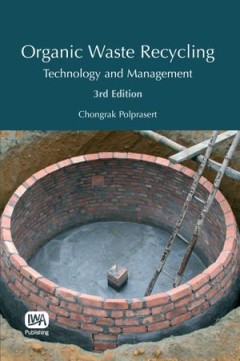
Organic Waste Recycling; Technology and Management - Third Edition
This book covers the principles and practices of technologies for the control of pollution originating from organic wastes (e.g. human feces and urine, wastewater, solid wastes, animal manure and agro-industrial wastes) and the recycling of these organic wastes into valuable products such as fertilizer, biofuels, algal and fish protein and irrigated crops. Each recycling technology is described…
- Edition
- -
- ISBN/ISSN
- 9781780402024
- Collation
- -
- Series Title
- -
- Call Number
- -
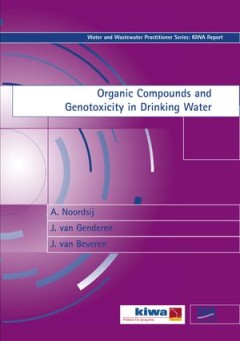
Organic Compounds and Genotoxicity in Drinking Water
Until recently only lipophilic compounds were analysed in any research on the occurrence of mutanogenic and carcinogenic compounds in water. They were isolated using XAD-resins. They contain approximately half of the total organic material present in water. A clear mutanogenic effect was demonstrated for these compounds using Amestest. The hydrophilic fraction of the organic material was diffic…
- Edition
- -
- ISBN/ISSN
- 9781780402598
- Collation
- -
- Series Title
- -
- Call Number
- -
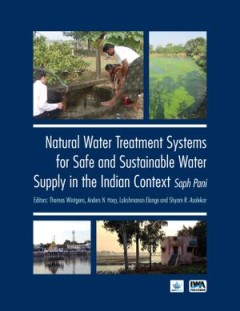
Natural Water Treatment Systems for Safe and Sustainable Water Supply in the …
Natural Water Treatment Systems for Safe and Sustainable Water Supply in the Indian Context is based on the work from the Saph Pani project (Hindi word meaning potable water). The book aims to study and improve natural water treatment systems, such as River Bank Filtration (RBF), Managed Aquifer Recharge (MAR), and wetlands in India, building local and European expertise in this field. The proj…
- Edition
- -
- ISBN/ISSN
- 9781780407104
- Collation
- -
- Series Title
- -
- Call Number
- -
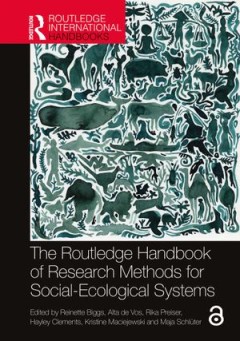
The Routledge Handbook of Research Methods for Social-Ecological Systems
he Routledge Handbook of Research Methods for Social-Ecological Systems provides a synthetic guide to the range of methods that can be employed in social-ecological systems (SES) research. The book is primarily targeted at graduate students, lecturers and researchers working on SES, and has been written in a style that is accessible to readers entering the field from a variety of different d…
- Edition
- -
- ISBN/ISSN
- 1000401510, 9781000401516
- Collation
- -
- Series Title
- -
- Call Number
- -
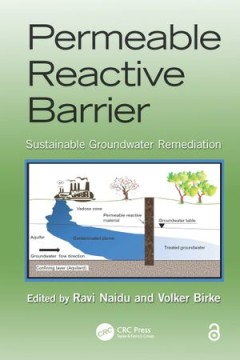
Permeable Reactive Barrier Sustainable Groundwater Remediation
Remediation of groundwater is complex and often challenging. But the cost of pump and treat technology, coupled with the dismal results achieved, has paved the way for newer, better technologies to be developed. Among these techniques is permeable reactive barrier (PRB) technology, which allows groundwater to pass through a buried porous barrier that either captures the contaminants or breaks t…
- Edition
- -
- ISBN/ISSN
- 9781482224481, 1482224488
- Collation
- -
- Series Title
- -
- Call Number
- -

Oceanography and Marine Biology: An Annual Review, Volume 56
Oceanography and Marine Biology: An Annual Review remains one of the most cited sources in marine science and oceanography. The ever increasing interest in work in oceanography and marine biology and its relevance to global environmental issues, especially global climate change and its impacts, creates a demand for authoritative reviews summarizing the results of recent research. OMBAR has cate…
- Edition
- -
- ISBN/ISSN
- 9780429845765, 0429845766
- Collation
- -
- Series Title
- -
- Call Number
- -
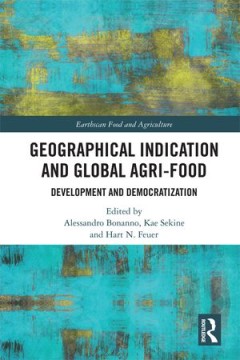
Geographical Indication and Global Agri-Food Development and Democratization
This book addresses the relevance of geographical indication (GI) as a tool for local and socio-economic development and democratization of agri-food, with case studies from Asia, Europe and the Americas. A geographical indication is a sign used on products that have a specific geographical origin and possess qualities or a reputation that are due to that origin. It provides not only a way f…
- Edition
- -
- ISBN/ISSN
- 9780429895128
- Collation
- -
- Series Title
- -
- Call Number
- -
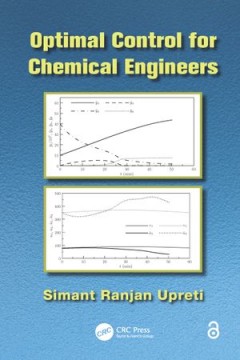
Guide for Small Community Water Suppliers and Local Health Officials: Lead in…
This Guide for Small Community Water Suppliers and Local Health Officials is one of a series produced by the International Water Association's (IWA) Specialist Group on Metals and Related Substances in Drinking Water. It is an abbreviated compilation of the wide range of scientific, engineering, health and operational issues concerned with the control of lead in drinking water in small water su…
- Edition
- -
- ISBN/ISSN
- 9781843393801
- Collation
- -
- Series Title
- -
- Call Number
- -
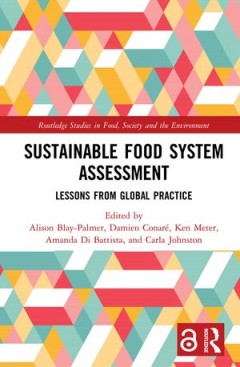
Sustainable Food System Assessment Lessons from Global Practice
Sustainable Food System Assessment provides both practical and theoretical insights about the growing interest in and response to measuring food system sustainability. Bringing together research from the Global North and South, this book shares lessons learned, explores intended and actual project outcomes, and highlights points of conceptual and methodological convergence.Interest in assessing…
- Edition
- -
- ISBN/ISSN
- 0429801394, 9780429801396
- Collation
- -
- Series Title
- -
- Call Number
- -
 Computer Science, Information & General Works
Computer Science, Information & General Works  Philosophy & Psychology
Philosophy & Psychology  Religion
Religion  Social Sciences
Social Sciences  Language
Language  Pure Science
Pure Science  Applied Sciences
Applied Sciences  Art & Recreation
Art & Recreation  Literature
Literature  History & Geography
History & Geography